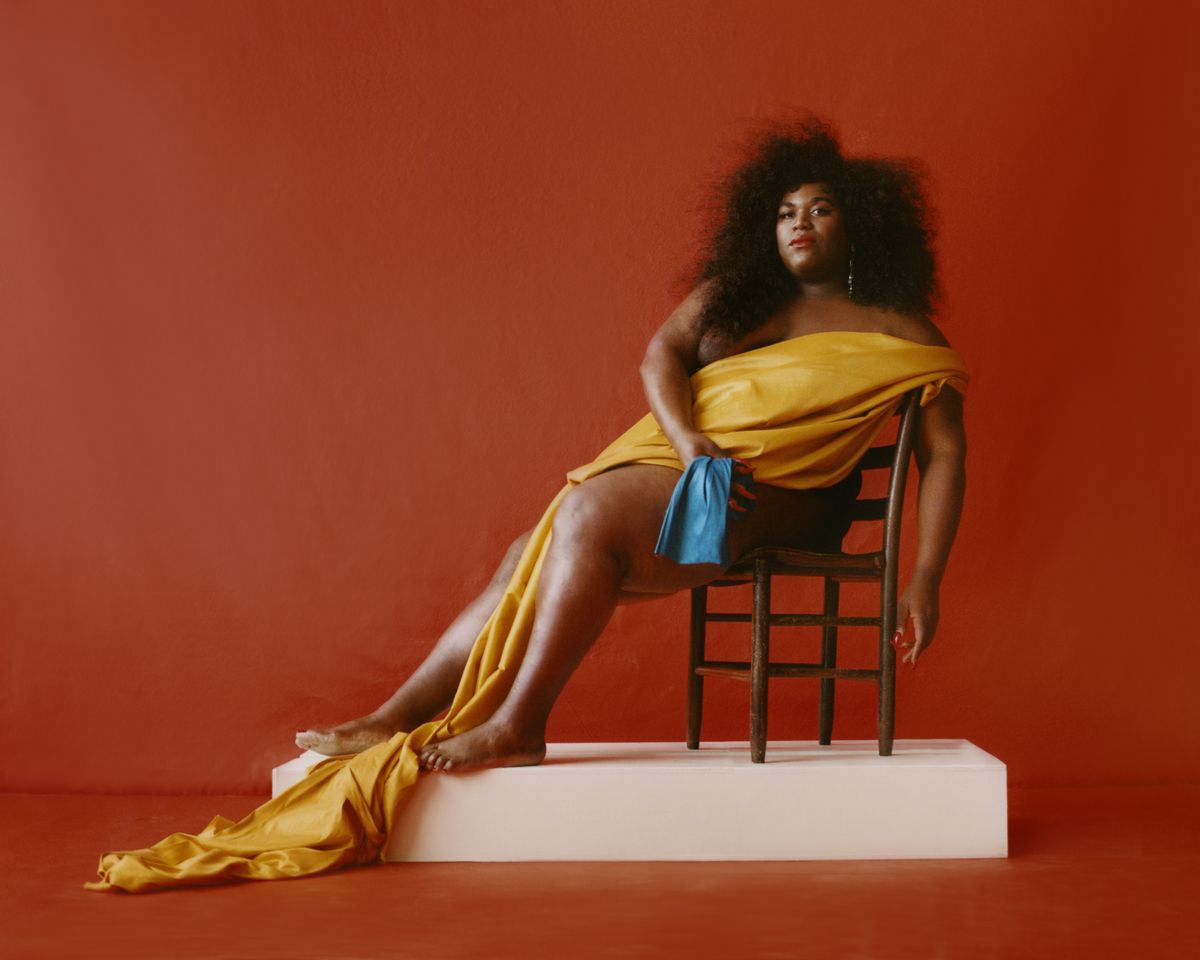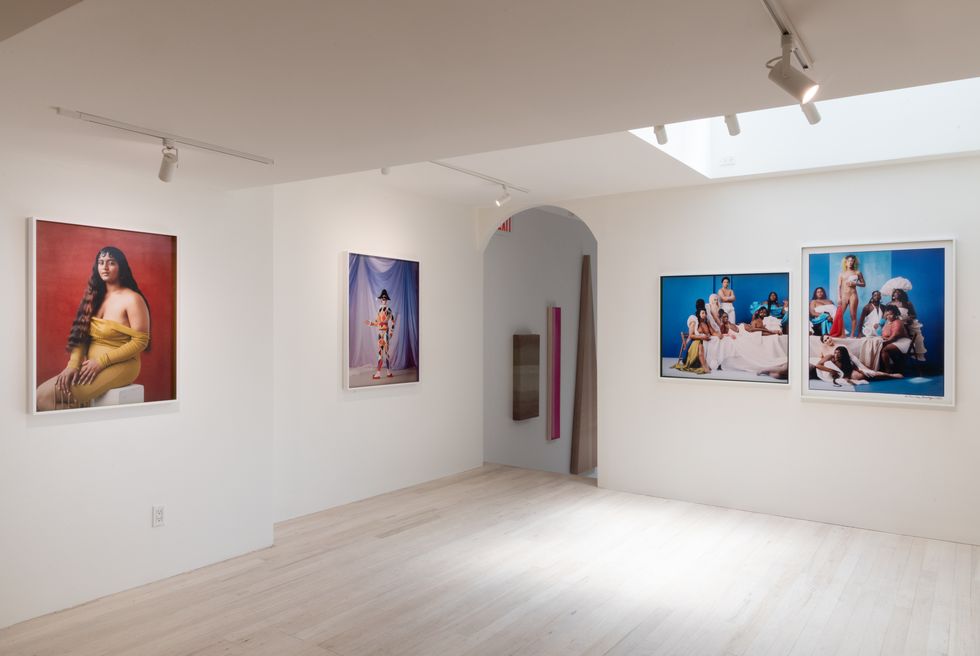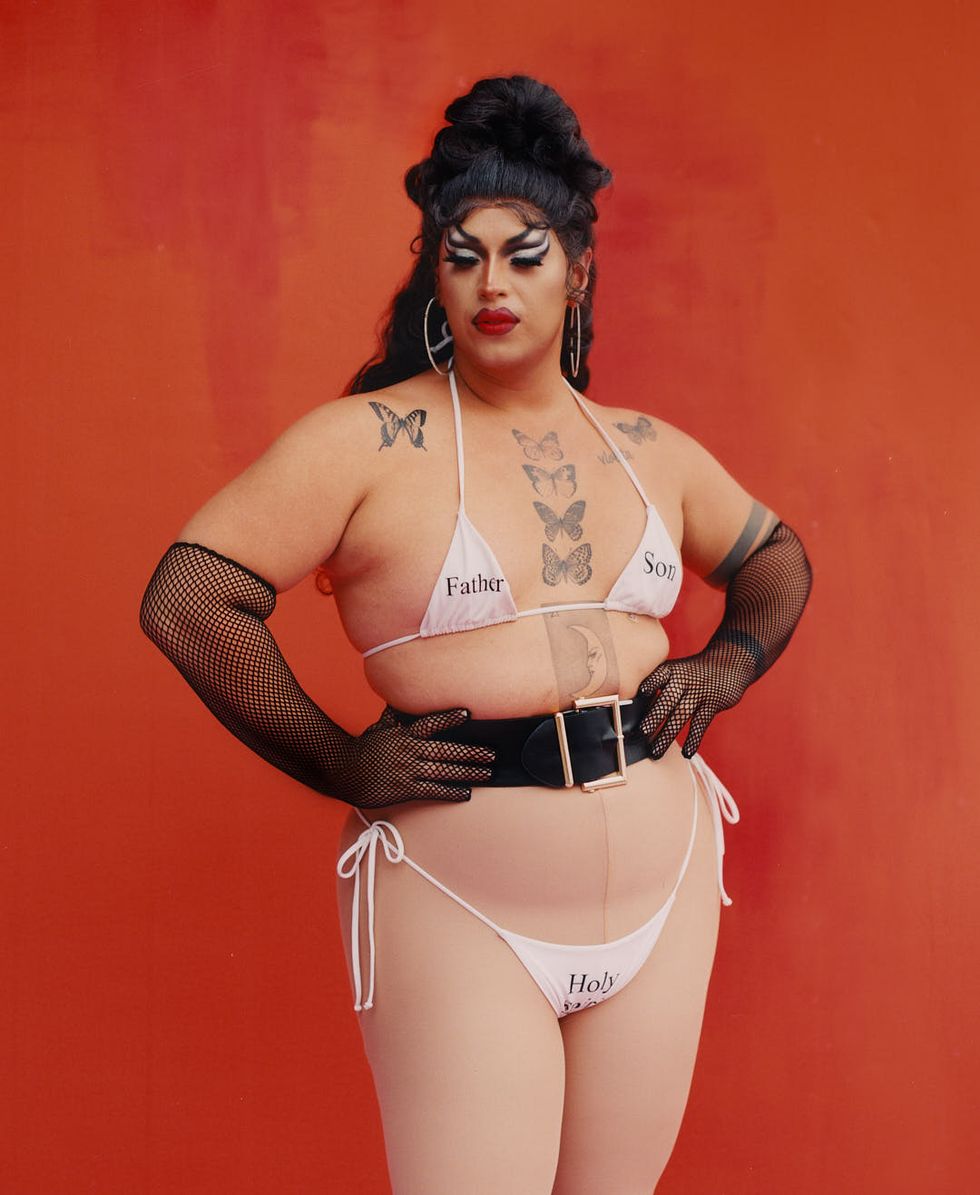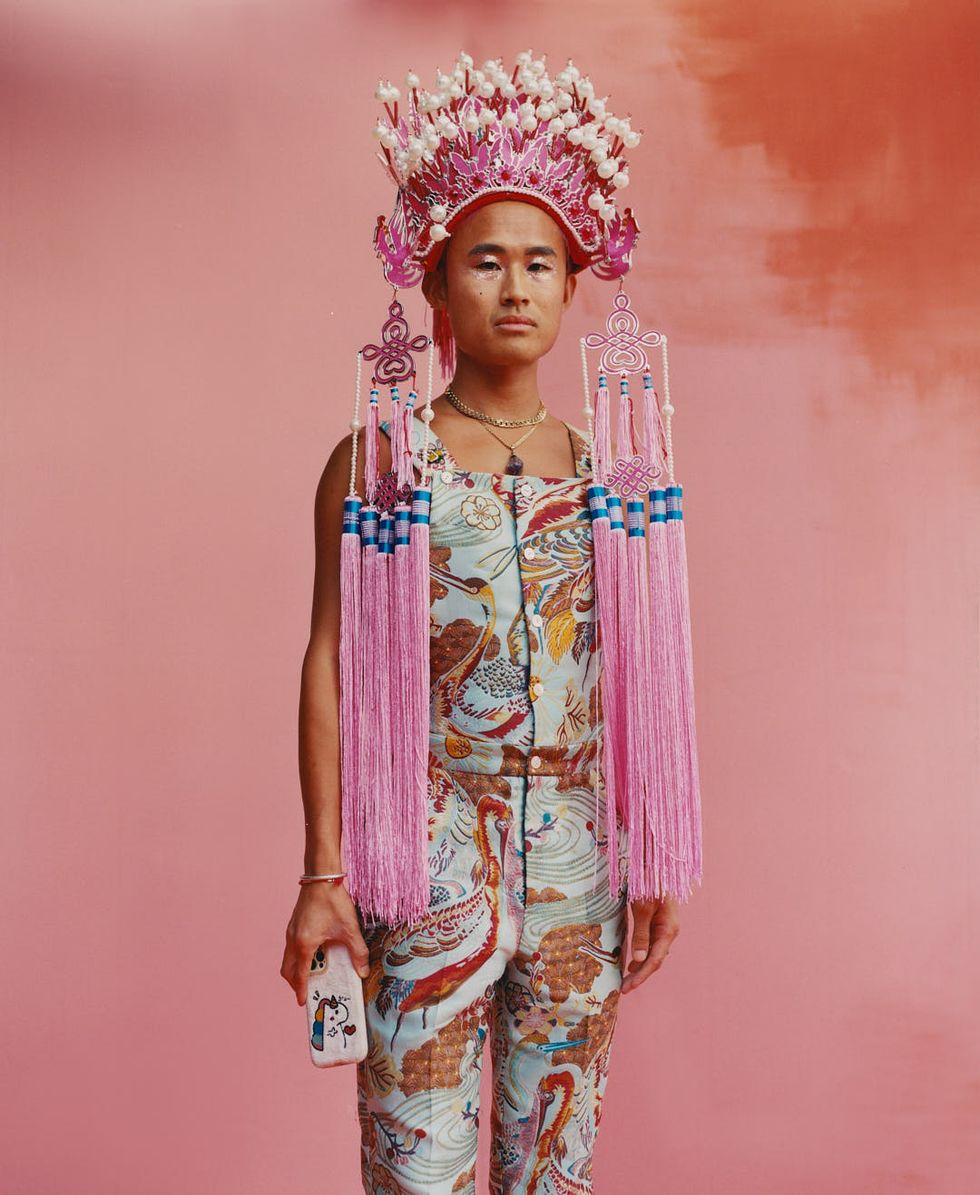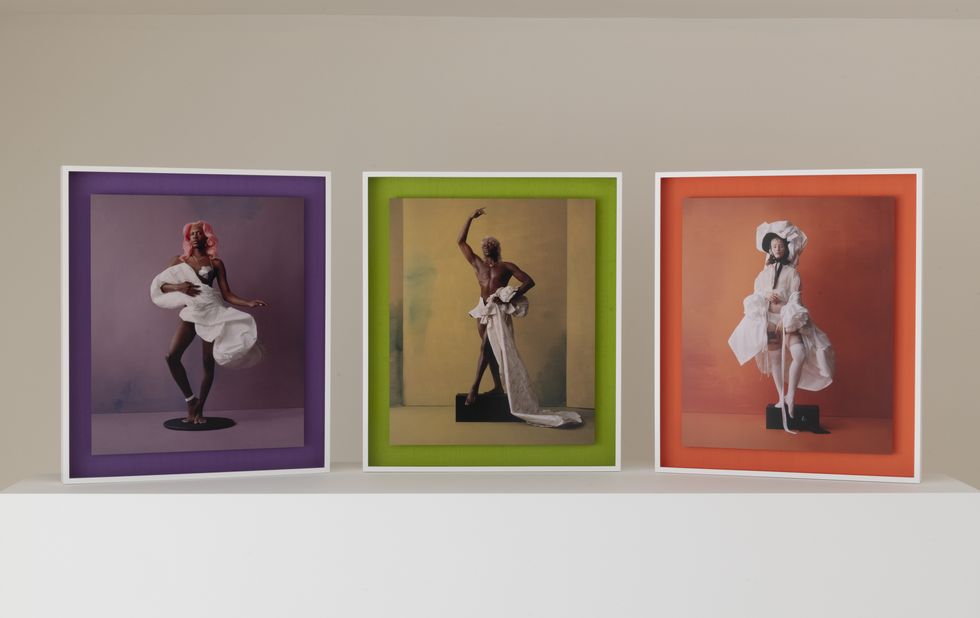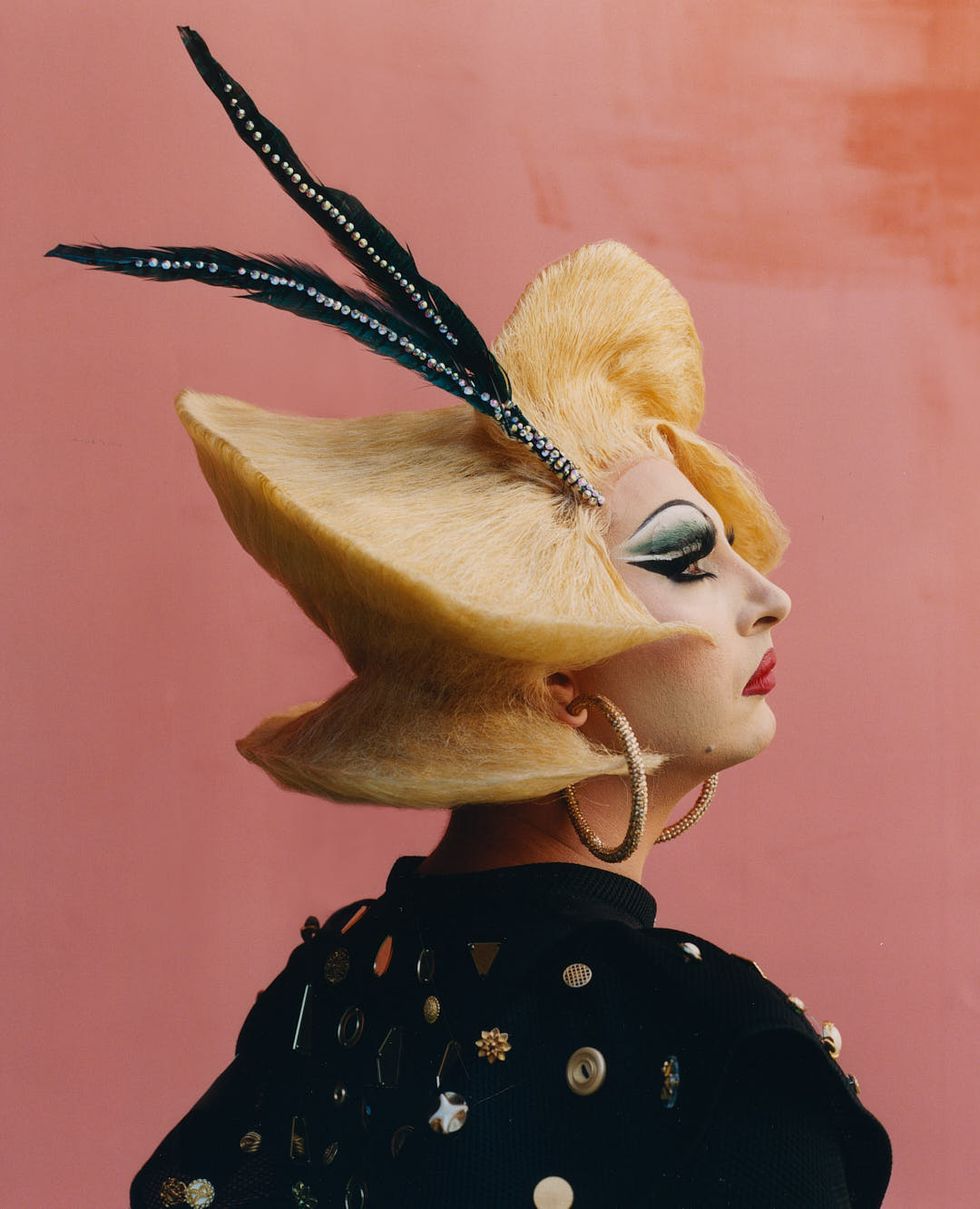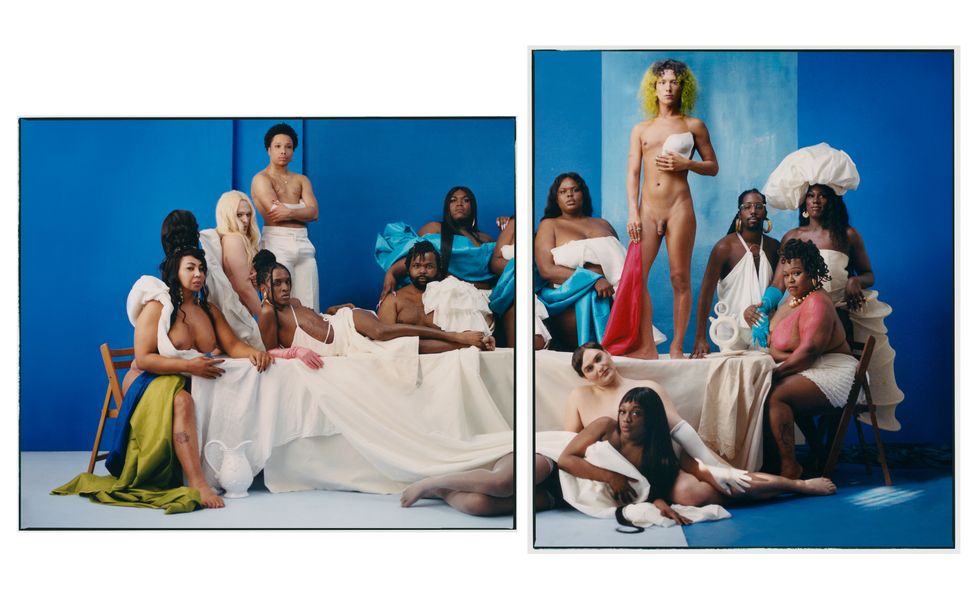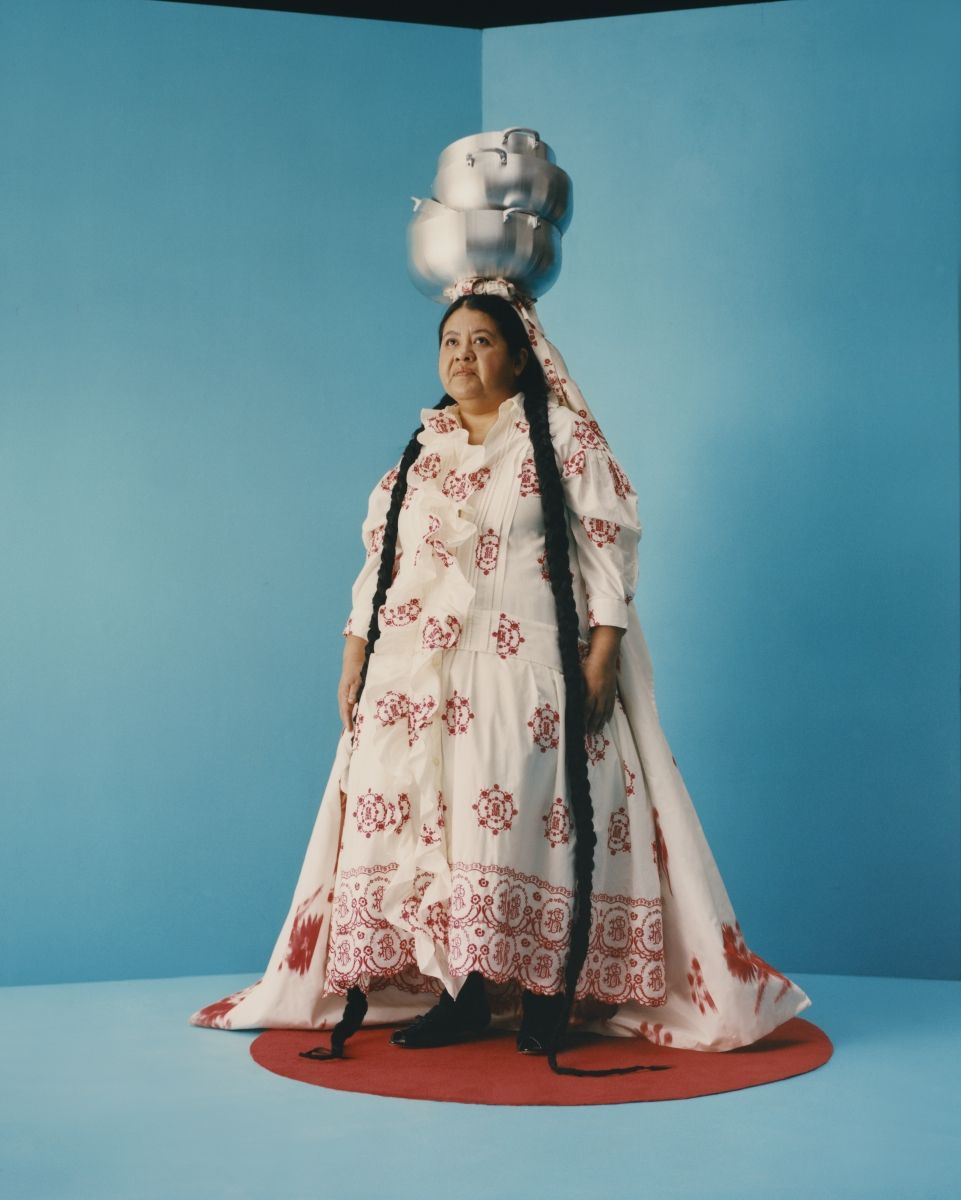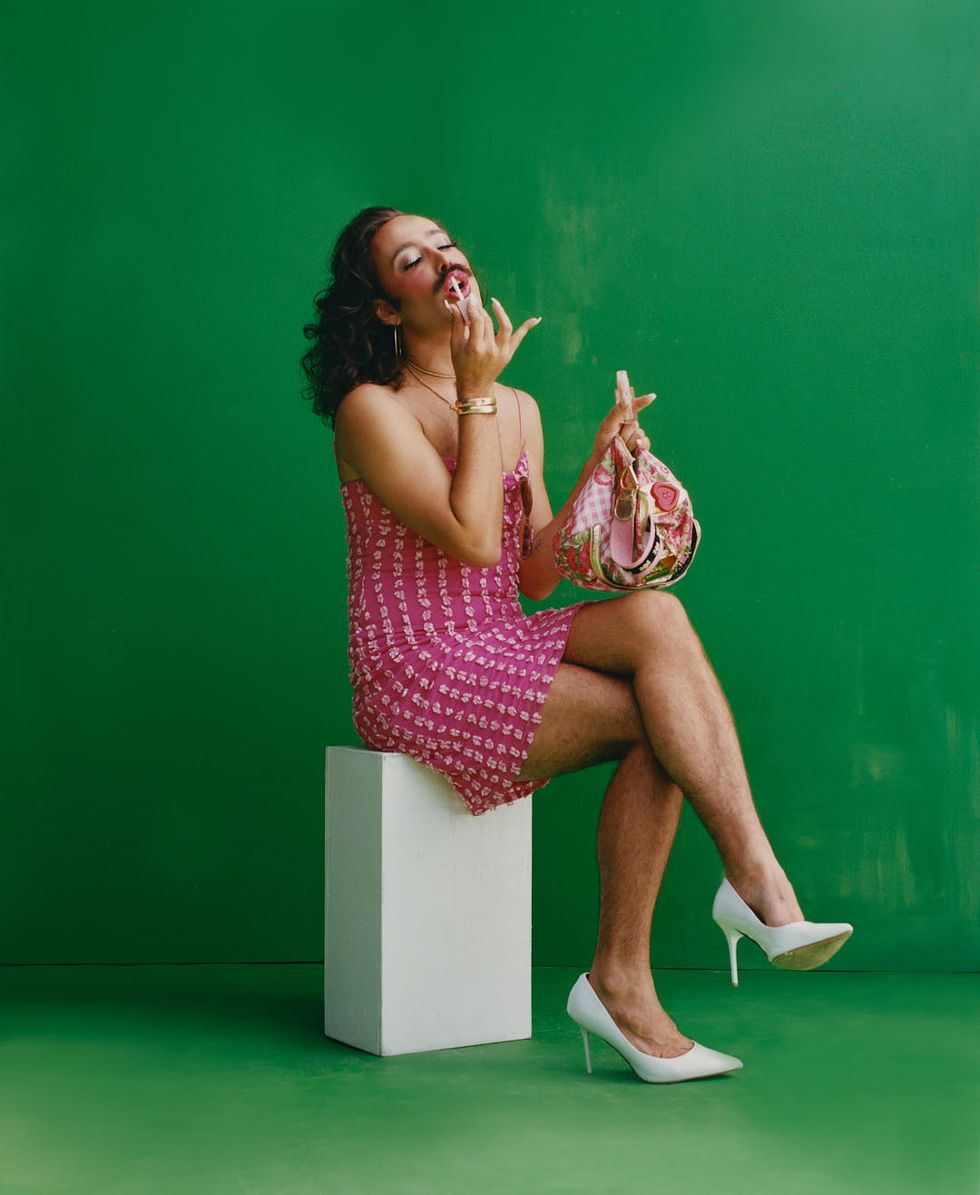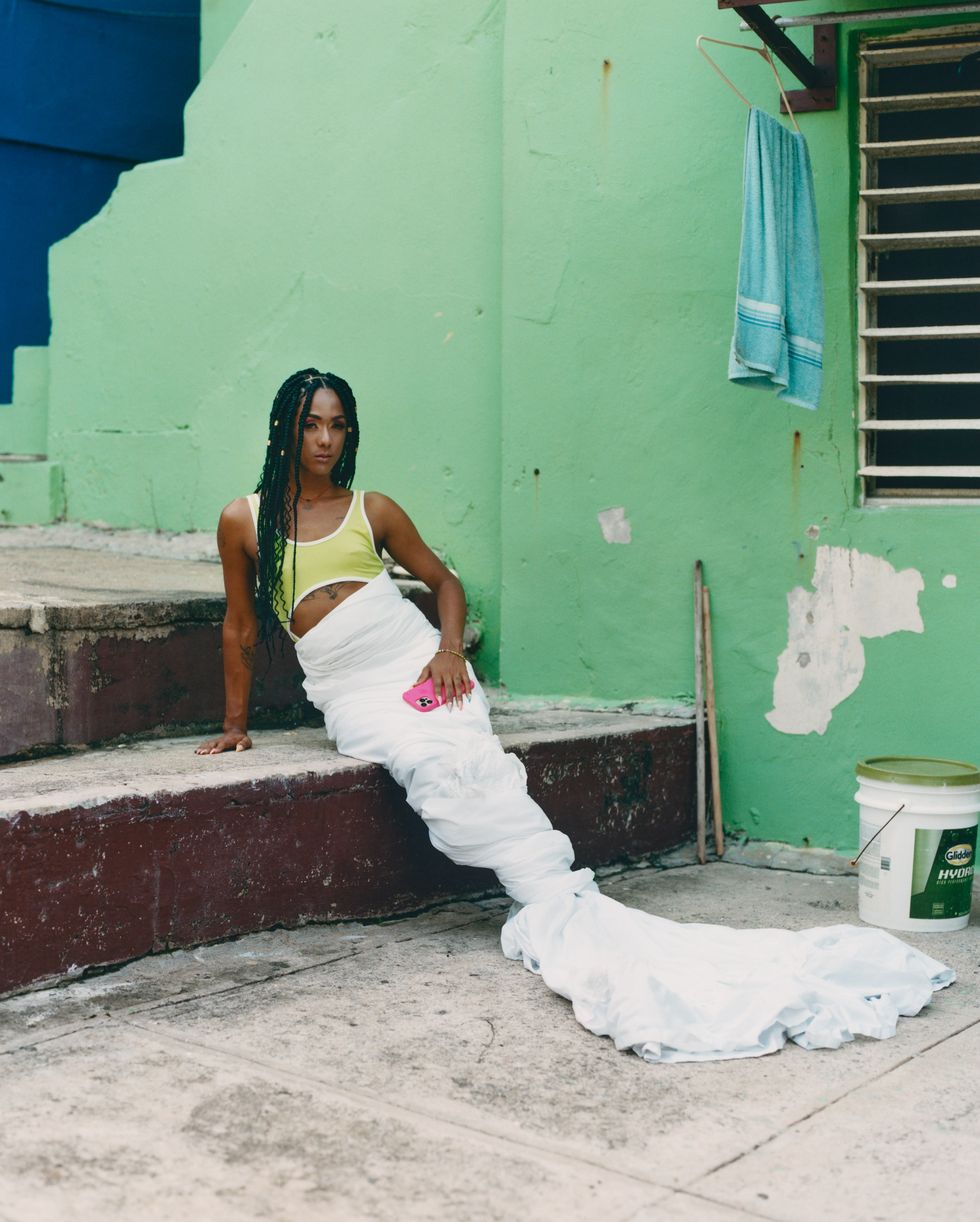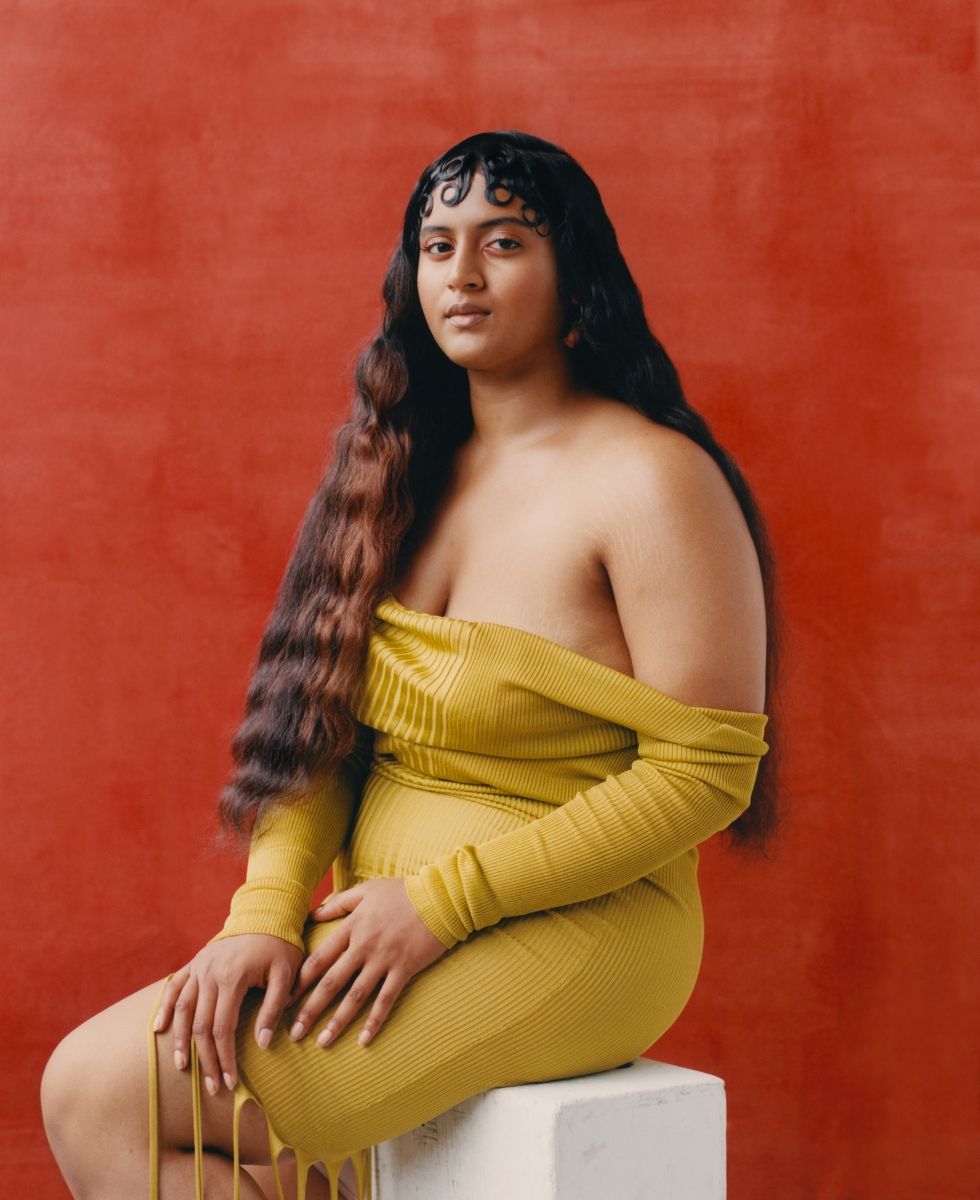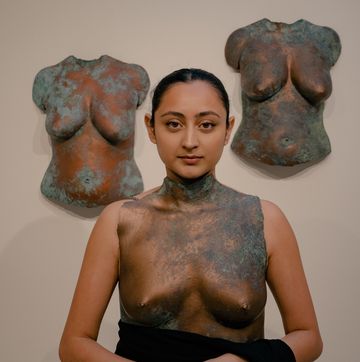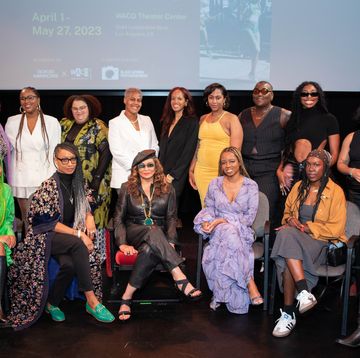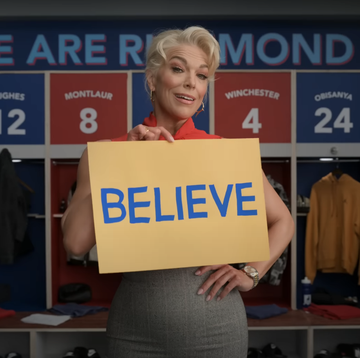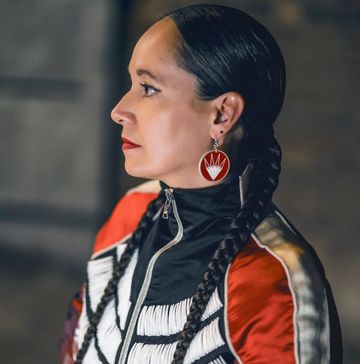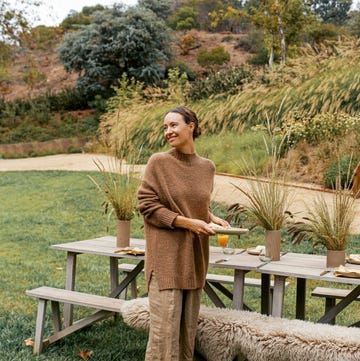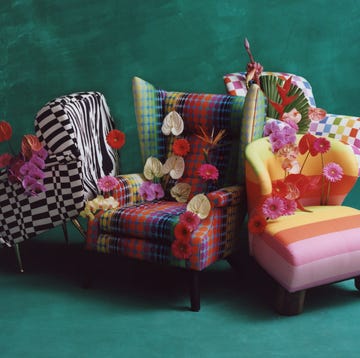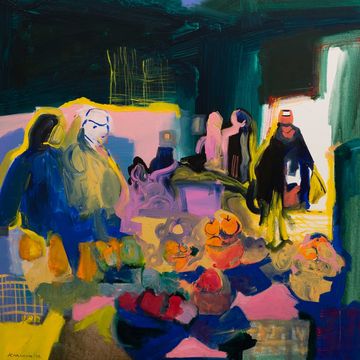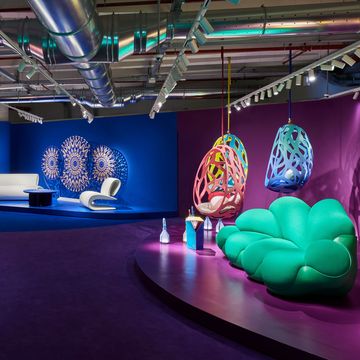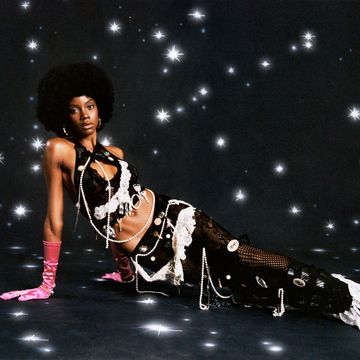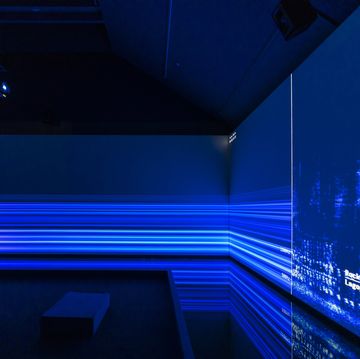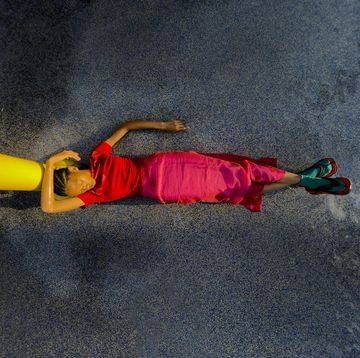“What if beauty and power can exist on pedestals that we have never seen before?” This question posed by photographer Camila Falquez serves as the central theme for her debut solo exhibition Gods That Walk Among Us, a collection of 28 portraits now showing at Hannah Traore Gallery until July 9.
Over the past five years, New York-based Falquez traveled to Spain, Puerto Rico, and Cuba to capture her own definition of royalty—the activists, performers, and artists that empower their communities. “These are the people that should be in museums,” says Falquez, who was born in Mexico to Colombian parents and raised in Spain. “You can’t keep denying the existence of these magical beings because it’s undeniable that they’re beautiful. They’re maintaining our society, but they’re not being recognized. So I’m working to preserve and liberate us.”
On the afternoon that I speak to Falquez, she’s still reeling from the show’s opening, which took place on June 2. “It was beyond my wildest dreams. It was our very own Met Gala. Everyone dressed up.” Guests included Myles Loftin, Raquel Willis, Richi Shazaam, Quil Lemons, and Qween Jean (who appears in several photos in the show). “It was nice to celebrate everyone, which is very key in what I do, the feeling that this is not about me. It’s about community.”
Falquez brings the same intention to her editorial work. Most recently, she photographed Zendaya for the cover of TIME, and in the past has shot the likes of Anya Taylor-Joy and Bad Bunny, and worked with brands like Carolina Herrera. “I shoot a lot of celebrities in my work, which I think is a good mix because it helps balance out the power. If Zendaya is next to Qween, then it helps people understand that they are equally important in the world. I do that very consciously. I treat every space with the same love and care.”
Below, Falquez spoke to ELLE.com about the process of creating Gods That Walk Among Us, the omnipresence of spirituality in her work, and the role of art in the revolution.
Congratulations on your first solo exhibition! I read that you’ve been subconsciously working on this project for the past five years. Can you tell me a bit about the process?
Absolutely. I was approached by Hannah [Traore, gallery director and founder] around November [of 2021] and she told me that she was getting a new space and wanted me to do a solo exhibition. When she mentioned it, it took me a second to realize, “Oh, I actually have this. This show already exists.” I’m a working photographer so I’ve been building this body of work in between assignments. My initial reaction was, “Oh, let me take a trip to India and shoot. I need to produce all this work.” Thank God I have good advisors. They were like, “No, baby, you already have this show.” So it was more about going back into my archive and looking at the connections between the work I’ve been doing during this period of time, which I would say was five years. It’s been beautiful to be unconsciously creating a body of work. All the work that is exhibited had been published except for two photos that are the main images of the show.
When did the title of the show come to you? I love it. It’s so good.
Right? I did not come up with the title myself. My studio is in Bushwick and I read it on a mural of two Indigenous people and it said really small on the left corner: “Gods that walk among us.” I had this very strong reaction when I read that title. I realized that I’ve been doing that. You know, I’m a photographer, but I’m mostly someone with the capacity to see royalty walking among us—in the places we eat, in the laundromats, in community organizing. Those are the people that are actually holding our communities together. This is the royalty that we should be praising. So when I saw that on the walls of Bushwick, I felt it. It hit me.
The photographs in the show depict artists, performers, and activists, but in your own words, who are these gods that you're introducing us to? What do they mean to you and to their communities?
Something that I always want to make clear is that this royalty has been working very efficiently for years. They’ve been around, only overlooked. People ask me, “How do you choose the subjects of your photographs?” What I do, really, is nothing but fall in love with them. It’s a very spiritual connection. The way I approach these gods is through crushes. I crush [on them] and fall in love. And it’s all sorts of people. It’s dancers, performers, and community organizers. To me, what they do is show us ways to live outside a system of oppression and overcome it. It’s like visions of freedom, forms of freedom. I think performance is very common in my work because when we see certain types of performance, especially humanitarian performance, we are seeing expressions of what freedom can look like. Even if we only know these visions as visions and we’re not experiencing that as a reality, those are still forms of freedom. So it’s a range. It’s people that work in their communities or people that do drag because drag, for me, is the ultimate form of expressing freedom. And, who else? Obviously, Qween Jean is an incredible activist. So there are all sorts of people in the show. There are women, older women, Indigenous people. This is royalty that is among us and we should change our orientation around who we take care of, who we admire, and who we look up to, because maybe those people are within our neighborhoods. They’re everywhere. So hopefully, this show helps to change the orientation of what we’re praising as a community.
Speaking of performance, I read that you were a former ballet dancer. Is that true? Because you can really see your love for dance in the photos, especially in “The Tryptic,” with everyone doing pliés.
I was never an official ballet dancer. I trained and I wanted to be a flamenco dancer as a kid. I did everything right before [you become a] professional, but dance has remained in my life since forever and still today. Music and dance is a huge part of my life. I’ve been trying to talk more about this because it’s a very important part of my process. Every time I do a show or an opening, music needs to be there because it’s where my creative process lives. Every single photo in the show has music in the background. Even though we can’t hear it, it’s there. We dance on set. I dance every extra second of my life. So dance has become, rather than something I was pursuing professionally, more like my spiritual practice. It’s an international, sacred language that we all communicate. I find it very useful when I’m doing a shoot or dealing with performance. Music and dance is where we connect.
In the past, you’ve spoken a lot about the role of beauty in your work. Has your own definition of beauty expanded after working on this project?
I think I’ve been noticing my own evolution with beauty. I think beauty is a form of communication. Historically, it’s been studied from all angles. We’ve talked about it in the Renaissance and in a very Eurocentric way, and in a way that was used against anyone that didn’t fit those molds. So now, we can talk about colonialism, postcolonialism, liberation, race, queerness, and use those tools that were used against us. What I’m doing is hacking that and trying to say that beauty is larger, that beauty might lay in places that Western society has oppressed and killed. So more than a spiritual thing, I think beauty is something that we are now using in a new form. And I don't think it's just me. I think it’s a worldwide art movement across cultures. It’s beautiful to see the empowerment of communities and languages that have been oppressed.
What’s the role of art in revolution? Do you see the two as interconnected?
Extremely. Art is an incredible tool for revolution. I heard something incredible from Alok Vaid-Menon that I now use to define my work: “I manifest the impossible, but it doesn’t make it possible.” I don’t think I’m changing reality. I’m suggesting how it could be. There’s all this other work that needs to be done, but I can’t do it alone. We still need lawmakers. But it’s just powerful to be able to use art in that way. At least someone who has never seen the people that I've seen, can now see them differently. I know that’s shifting.
Do you have a favorite photo from the show?
No, it’s like choosing a favorite kid. [Laughs] But there is one very powerful photo, which is the family photo. I asked Qween Jean if she wanted to shoot her chosen family. I feel like family is a tool that’s also used against us—the structure of it, having your mother and father in the house. So I thought, “Why not also show revolutionary families that are extremely structured, and that are spaces of freedom and support?” They’re real, too. So we created this incredible photo of Qween with her chosen family. It’s the main photo of the show and I’m incredibly proud of it.
What did you learn about yourself through this project?
Well, I had never done a show before, so it’s been a huge learning curve. So I had to think, “What is it that I want to be doing? How do I want to approach this?” And I’ve decided to sell unique works. I’m not selling editions. I’ve framed every photo with very fine silk that I’ve been sourcing in Spain because I want these to feel like paintings. The digital world is an ongoing feed of images. So to have these one-of-a-kind, extremely high-end photos makes them feel as important as they are. It’s also my first time in a gallery space. I want to make a special mention to Hannah because she's the person who brought the space and the means to make this happen. We don’t get these opportunities often. So for someone like her to just be like, “Do whatever you want, this is your moment,” has been an incredible blessing.
This interview has been lightly edited and condensed for clarity.
Juliana Ukiomogbe is the Assistant Editor at ELLE. Her work has previously appeared in Interview, i-D, Teen Vogue, Nylon, and more.
